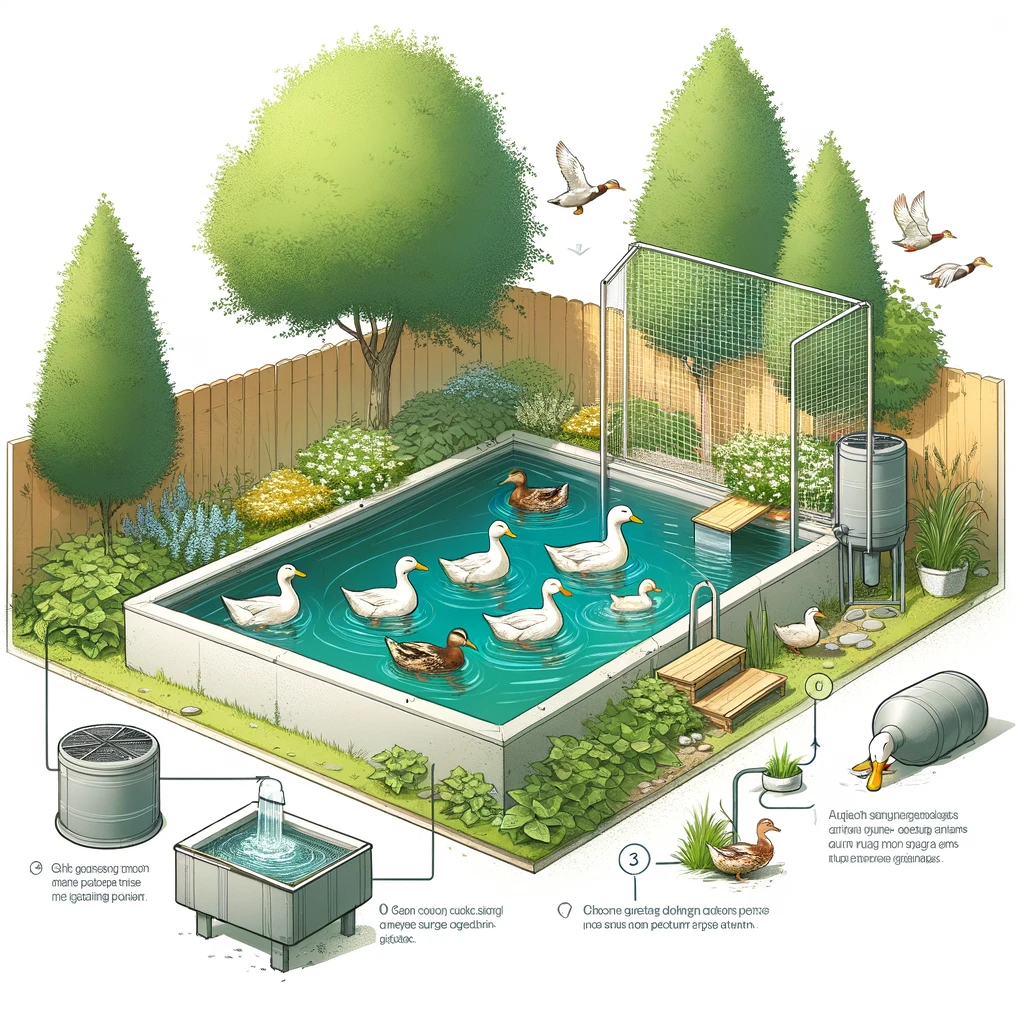The Ultimate Guide to Setting Up Your Urban Duck Pond

Creating a duck pond in an urban backyard might seem like a daunting task, but with the right planning and execution, it can be a rewarding project that enhances your urban duck farming experience. This guide will walk you through the essential steps to setting up an efficient, picturesque duck pond, even in limited space.
Planning Your Pond
1. Space Assessment: The first step is to evaluate the space you have available. Consider the size of your backyard and how much of it you can dedicate to your pond. A good starting point is a pond that’s at least 4×6 feet, allowing enough room for your ducks to swim, bathe, and enjoy themselves.
2. Design and Depth: Design your pond with both aesthetics and functionality in mind. A depth of 18-24 inches is ideal, deep enough for the ducks to enjoy but not so deep that it poses safety risks. Include gently sloping sides to allow ducks easy access in and out of the water.
3. Filtration and Water Movement: To keep the water clean and healthy, invest in a good filtration system. A biofilter, which uses natural processes to clean the water, is a great choice for duck ponds. Additionally, incorporating a water feature like a small waterfall or fountain can help maintain water movement, which is essential for oxygenation and preventing algae growth.
Construction and Setup
1. Digging Your Pond: Once you’ve planned your pond, the next step is to start digging. If you’re doing this yourself, you’ll need a spade, a wheelbarrow for the soil, and plenty of determination. Alternatively, you might consider hiring professionals for this task.
2. Pond Liner Installation: After shaping your pond, install a high-quality pond liner to prevent water from seeping into the ground. Ensure it’s well-secured and covers the entire pond area, with extra material on the edges for anchoring.
3. Filling the Pond: Fill your pond with clean, fresh water. If you’re using tap water, let it sit for a few days or use a water conditioner to neutralize chlorine, ensuring it’s safe for your ducks.
Creating a Safe and Enjoyable Habitat
1. Landscaping Around the Pond: Planting native plants and grasses around the pond not only adds to its beauty but also provides shelter and foraging opportunities for your ducks. Avoid plants that are toxic to ducks and opt for species that can thrive in wet conditions.
2. Safety Measures: To keep your ducks safe, especially in an urban environment, consider fencing around the pond area. This will protect them from predators and prevent them from wandering off.
3. Maintenance Routine: Regular maintenance is crucial to keep your pond clean and healthy. This includes monitoring the water quality, cleaning the filter, and removing any debris or fallen leaves.
Enjoying Your Urban Duck Pond
With your pond now set up, you can enjoy watching your ducks explore their new environment. A well-designed pond provides them with a space that mimics their natural habitat, promoting their health and happiness. It’s not just a pond; it’s a vibrant ecosystem that brings a piece of nature into your urban backyard.

Creating an urban duck pond is a fulfilling project that enhances your urban farming experience. It requires effort, but the rewards—happy ducks, a beautiful backyard feature, and a closer connection to nature—are well worth it. Whether you’re a seasoned urban farmer or new to the scene, a duck pond can be a fantastic addition to your urban farm, providing joy and tranquility in the heart of the city.